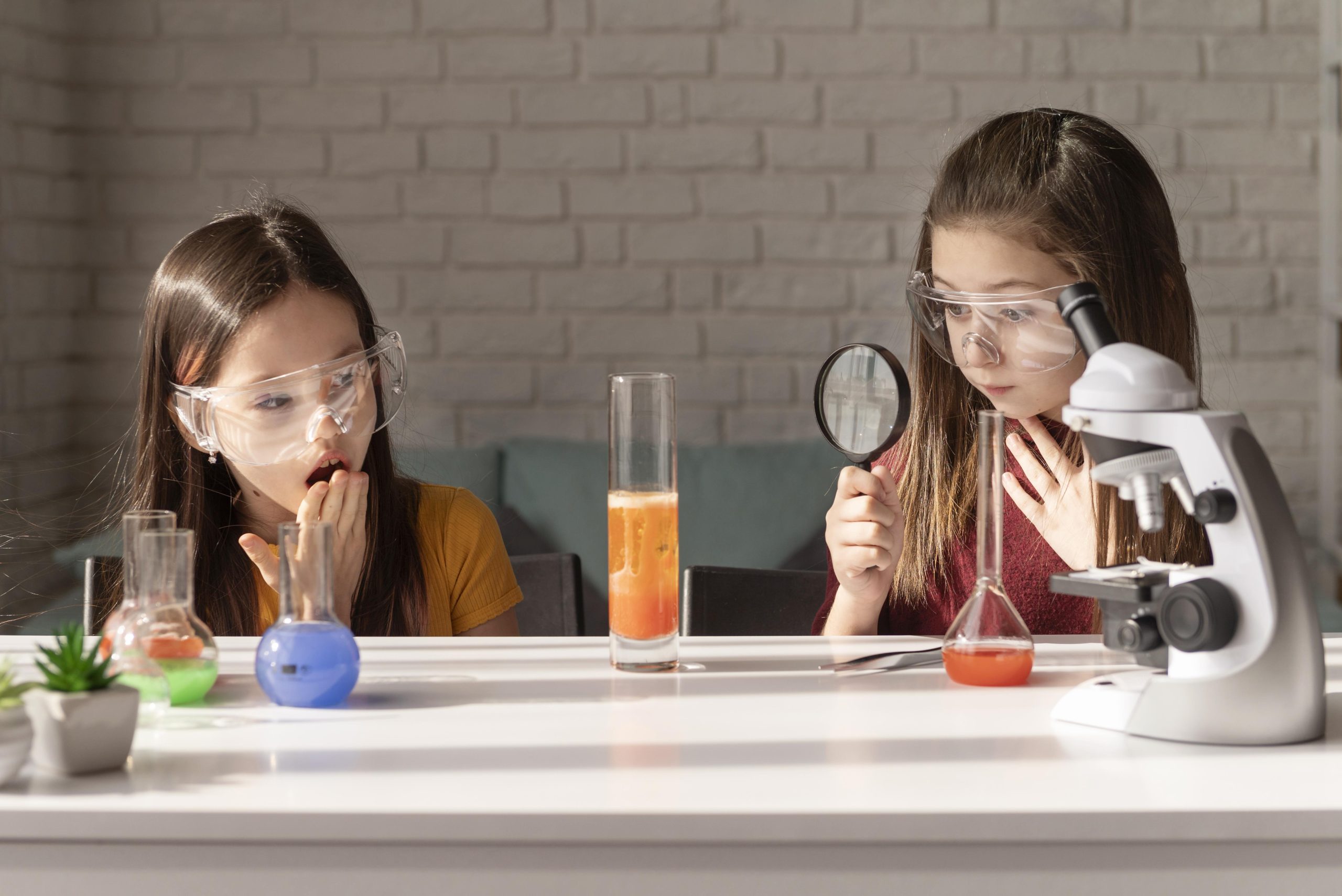Step into the world of scientific inquiry where your inquisitive mind will be put to the test. From investigating crystal formations to understanding the physics of forces, these projects offer a gateway to a realm of knowledge waiting to be explored. See how these hands-on activities can expand your horizons and nurture a passion for discovery. Discover the possibilities that lie ahead as you delve into the realm of scientific exploration tailored for young minds like yours.
Crystal Formation Projects
Grow stunning salt stalagmites and stalactites in your kitchen with the Salty Cave Crystals project, creating small-scale models of cave crystals within a week. Witness the mesmerizing salt formation process as crystals form on a string hanging above a saltwater solution. The crystal growth stages are fascinating to observe, with stalactites gracefully growing down from the string while stalagmites slowly rise up from the dish below. Engage in captivating kitchen crystal experiments that showcase the unique characteristics of stalactites versus stalagmites.
Lung Model Experiment
After exploring the fascinating process of crystal formation with the Salty Cave Crystals project, let’s now dive into the engaging world of the Lung Model Experiment. In this experiment, you will observe lungs with an easy-to-make model that demonstrates key concepts of lung function and the respiratory system. By inflating and deflating balloon lungs, you will witness firsthand how volume changes affect air pressure and the movement of air within the lungs.
To make the most out of this experiment, let’s break down the key components in a table format:
| Keywords | Description |
|---|---|
| Balloon inflation | Inflate and deflate balloon lungs |
| Air pressure | Understand how air pressure depends on volume |
| Lung function | Observe the basic principles of lung function |
| Volume changes | See how volume changes affect air pressure |
| Respiratory system | Learn about the respiratory system in action |
Cloud Formation Projects
Let’s delve into the captivating world of Cloud Formation Projects, exploring the magic behind creating clouds in a bottle. Cloud identification techniques, atmospheric phenomena exploration, weather prediction methods, cloud classification systems, and meteorological experiments and observations are all part of understanding clouds. By creating a cloud in a bottle, you can witness how gas expansion causes cooling and condensation, leading to cloud formation when pressure is released. The process involves rubbing alcohol vapor condensing into droplets, mimicking the natural formation of clouds in the sky.
Through these projects, you can gain insight into the science behind cloud formation, which plays a crucial role in the water cycle and weather patterns. Experimenting with clouds not only allows you to visually witness the formation process but also provides a hands-on experience in understanding atmospheric dynamics. So, grab a bottle, some rubbing alcohol, and start exploring the enchanting world of clouds right at home!
Water Density Experiments
Witness the fascinating interaction of water densities through engaging experiments that demonstrate the effects of temperature changes on liquid behavior. Dive into the world of water density experiments to uncover the mysteries of buoyancy concepts and density variations. Explore the following through hands-on activities:
- Temperature effects: Observe how temperature impacts the density of water.
- Buoyancy concepts: Understand how objects float or sink in water based on their densities.
- Density variations: Explore the differences in density between hot and cold water.
- Liquid displacement: Witness the displacement of liquids when different densities interact.
- Experimental observations: Make note of your observations as you conduct experiments to understand the behavior of water under varying temperatures.
Engage in captivating experiments that allow you to see firsthand the intriguing science behind water density and temperature effects. Explore, discover, and learn through interactive demonstrations that make science come alive.
Physics of Forces Projects
Explore the captivating world of forces through engaging and interactive physics projects that will bring the principles of motion and interaction to life for fourth graders. Dive into the realm of force dynamics by conducting friction experiments to understand how surfaces interact. Delve into weight analysis to explore the effects of gravity on different objects and their motion. Engage in impact studies to observe how forces affect objects when they collide. Embark on motion investigations to uncover the secrets behind how objects move and interact with one another.
In these projects, you will have the opportunity to witness firsthand the intricate dance of forces at play in our world. Discover the wonders of force dynamics through hands-on experiments that will spark your curiosity and deepen your understanding of the fundamental principles governing motion. Get ready to embark on a thrilling scientific journey filled with exploration, discovery, and aha moments as you unravel the mysteries of physics through these exciting projects.
Hovercraft Design
Embark on an exciting journey into the realm of physics by exploring the innovative world of Hovercraft Design. Hovercrafts operate on the principle of creating an air cushion to reduce friction and enable smooth movement. Dive into this project by considering the following key elements:
- Air cushion: Utilize air pressure to lift the hovercraft off the ground, reducing friction and allowing for swift movement.
- Friction reduction: Implement techniques to minimize resistance between the hovercraft and the surface for efficient motion.
- Steering mechanism: Design a mechanism to control the direction of the hovercraft, ensuring precise navigation.
- Inflation process: Explore the process of inflating the air cushion to achieve the desired lift and stability for the hovercraft.
- Prototype testing: Build a prototype of your hovercraft design and conduct thorough testing to evaluate its performance and make necessary improvements.
Engage in hands-on experimentation and problem-solving to create a functional hovercraft that demonstrates the principles of physics in action.
Anemometer Project
Prepare to dive into the fascinating world of wind measurement with the Anemometer Project, where you will construct a device to gauge wind speed. Understanding wind speed is crucial for weather prediction and scientific exploration.
| Wind Measurement | Weather Prediction | Wind Speed | Meteorological Tool |
|---|---|---|---|
| Learn how to measure wind speed accurately | Predict weather patterns based on wind data | Understand the varying speeds of wind | Construct a tool used by meteorologists |
Constructing an anemometer will provide hands-on experience in using a meteorological tool while exploring the scientific principles behind wind measurement. By engaging in this project, you will gain insights into the dynamics of wind speed and its significance in predicting weather patterns. Experimenting with the anemometer will not only enhance your understanding of meteorology but also spark your curiosity about the natural forces that shape our environment. Get ready to embark on this exciting journey of discovery and learning!
Working Lung Model Design
Get ready to dive into the fascinating world of designing a Working Lung Model, where you will construct a hands-on replica of the human respiratory system.
- Respiratory system simulation: Visualize how the lungs function in the body.
- Air pressure demonstration: Understand how air moves in and out of the lungs based on pressure changes.
- Lung function exploration: Discover the intricate processes involved in breathing.
- Breathing mechanics investigation: Explore the mechanics behind inhaling and exhaling.
- Pulmonary model construction: Build a model that represents the structure and function of the lungs accurately.
This project will allow you to get hands-on experience with the respiratory system, simulate air pressure changes, explore lung functions, investigate breathing mechanics, and engage in constructing a pulmonary model. Get ready to unravel the mysteries of the human respiratory system through this interactive and educational activity.



